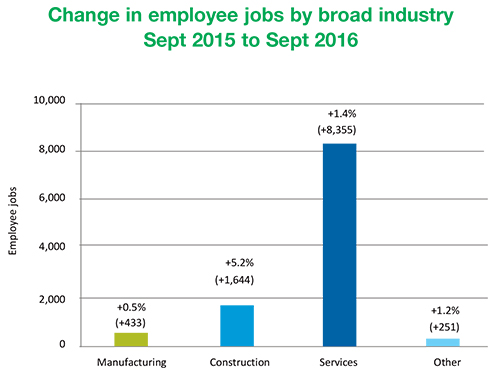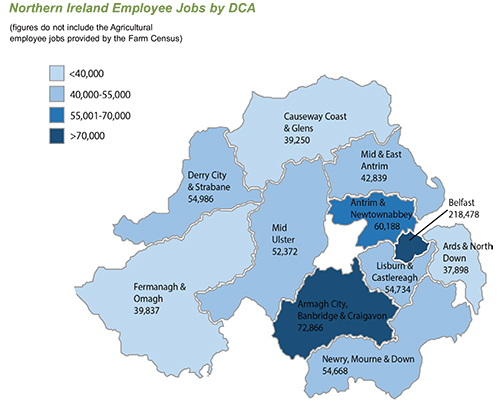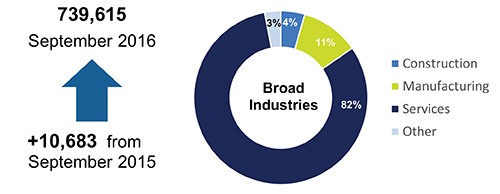Local councils job boost from industry improvement

Growth in the economy’s services and construction sectors has seen a jobs increase in seven district council areas. agendaNi outlines the figures included in the most recent Northern Ireland Business Register and Employment Survey.
Seven of Northern Ireland’s district councils recorded an increase of employee jobs over the year in the Northern Ireland Business Register and Employment Survey 2016. As expected, the majority of Northern Ireland’s jobs are in the most populous district council areas of Belfast (30 per cent) and Armagh City, Banbridge and Craigavon (10 per cent). Antrim and Newtownabbey had the largest increase, up 8 per cent to 60,188 jobs. Of the four district councils to record a decrease in the number of employee jobs since 2015, Belfast’s 1,704 decrease was the largest.

While Ards and North Down has the least number of jobs (37,898), it must be noted that the figures to not include the agricultural employee jobs provided by the farm census.
Overall for Northern Ireland, employee jobs rose by 10,683 (1.5%) over the year. Growth of the services industry was responsible for over three quarters of the overall growth and the industry now makes up 82 per cent of all employee jobs compared to the manufacturing industry’s 11 per cent, the construction industry’s 4 per cent and 3 per cent of jobs in the ‘other’ category.
Although services had the largest number of employee jobs increase, the construction sector had the largest percentage increase, up 5.2 per cent.

Almost 80 per cent of the total growth in construction resulted from growth in Derry City and Strabane, Newry, Mourne and Down and Armagh City, Banbridge and Craigavon District Councils.
There was a larger increase in full-time jobs (7,257) than part-time jobs (3,425). Also, a decrease in public sector jobs (-2 per cent) was mirrored by a 3 per cent increase in the private sector. The public sector decrease means that the number of employee jobs in the private sector in Northern Ireland has fallen below 200,000 for the first time since 2001.







